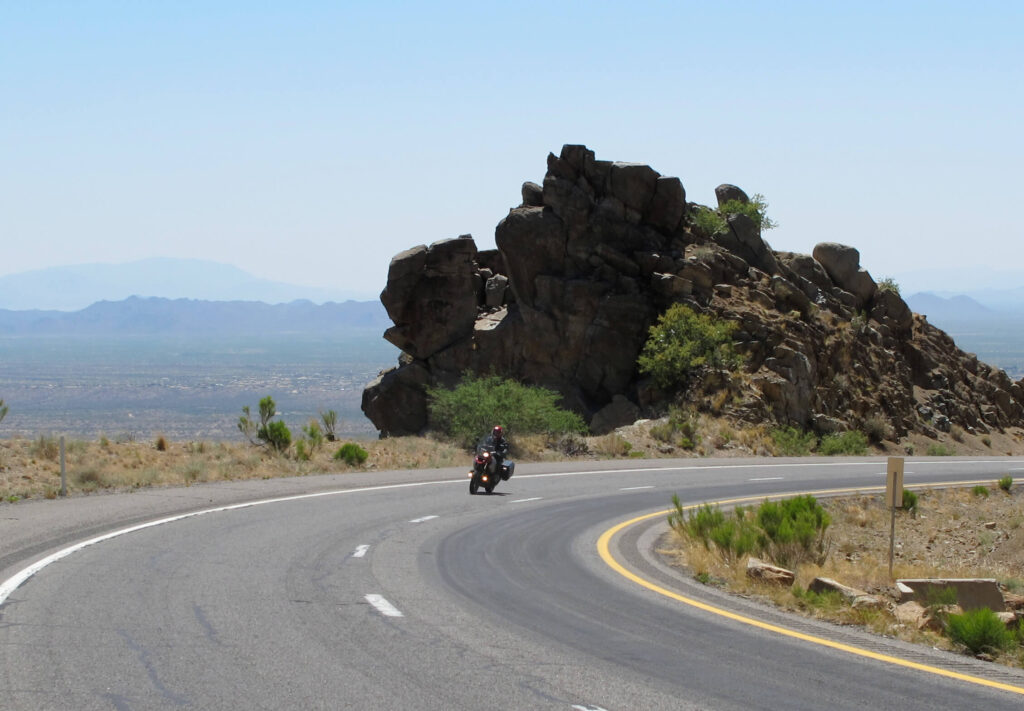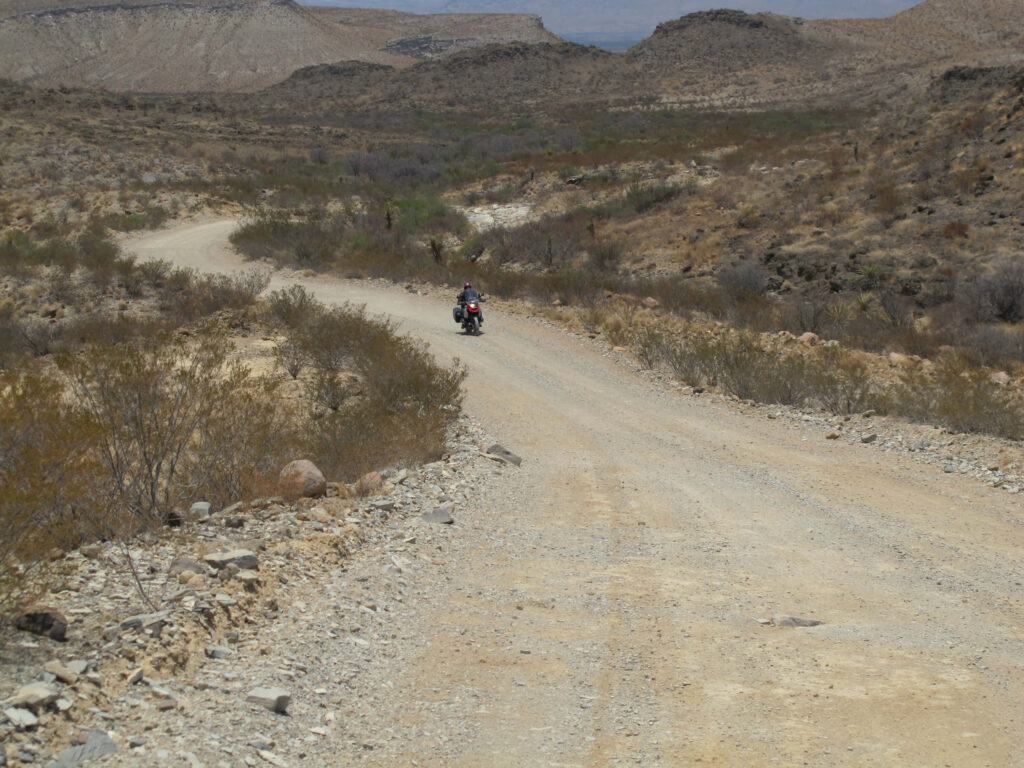
During the first run of this year’s continuation of the Time Machine Tour (Part Deux), in April, Michael and I motorcycled between shows in the Eastern United States and Canada. As described in “Eastern Resurrection,” the weather was cold, wet, and windy—even snowy, farther north.
Verily, we did suffer most grievously, and there were great chatterings of teeth and shivers of limb.
Likewise, as told in “Singletrack Minds in the Sceptered Isle,” May in Europe was cold and wet for Brutus and me. (If not quite so biblical.)
However, back in the U.S. in June, riding with Michael again, all that changed. We went from the freezer to the frying pan—then back in the freezer.
Hence a couple of other titles I considered for this story: “A Season of Fire and Ice” (felt too similar to an earlier story, “Fire on Ice”), and “A Season of Swelter and Snow.” But the best metaphor seemed to be the “frying pan.”
The above photo was taken in Big Bend National Park, near the Rio Grande in South Texas. It shows me riding the remote and unpaved Terlingua Ranch Road through the Chihuahuan Desert. It was June 13, and the temperature was 112 degrees Fahrenheit. It felt like an oppressive oven.
It felt deadly.
Apart from residents of the American Southwest, or the desert areas of North Africa, most sensible persons have never experienced such hellish degrees of heat. (I have long treasured a bit of weather trivia, asking which two states have never recorded temperatures above 100 degrees. One is Alaska, not surprisingly, but the other is Hawaii—kept more temperate by its mid-ocean setting and steady trade winds.)
In any case, let me tell you: 112 degrees is brutally hot. Especially on a motorcycle, on a dusty gravel road, under the midday sun, wearing full protective gear. But you would be suffering even if you were naked in the shade.
(And if that isn’t a fetching title for a painting, a song, a poem, or a story: “Naked in the Shade.”)
The landscape around us was signature Chihuahuan Desert, a regular, seemingly patterned array of creosote bushes, grassy clumps, and spiky yuccas. It seemed impossible to imagine that I had once seen that same baking landscape covered with snow—in March, 2003, when I spent a few days at Big Bend on the road trip that would become Traveling Music.
Beneath our wheels, the surface of Terlingua Ranch Road varied according to small degrees of elevation—along the ridges and higher stretches, it was packed dirt and gravel, easy enough to navigate. However, the lower-lying areas were deep, loose gravel and sand—the worst possible conditions for big, heavy bikes like ours. A berm of soft gravel or a deep rut filled with sand can take control of your front wheel, send the bike slewing around, and easily put you down. You always have to be ready to roll the power on, to keep the front wheel light—and to put a foot down sometimes, too, to keep the bike upright. Like riding in crosswinds, it was a constant wrestling match, and in such withering heat, it was another reason we didn’t want to have to start picking up bikes. That would soon drain us completely.
So we motored our way along in first gear, slowly and carefully.
This photo shows Michael in a section of loose gravel like that, creeping along with both feet poised like outriggers to “dab” the ground if necessary.

Two key sensory elements that photographs cannot convey are temperature and smell. I have written before about cold winter days, and my belief that snow has a distinct fragrance. In extremely hot and dry places, I am equally sure that heat has a smell. And just as with very cold air, in such conditions it can seem difficult just to draw a breath.
It is the nature of dry air, whether hot or cold, to carry little scent—a molecular thing—but there is a certain essence that seems to pervade every desert when the temperatures are extreme. Baked rock, baked dust, baked vegetation—maybe just baked planet.
The American deserts vary greatly in their type and pattern of flora: for example, Joshua tree and creosote in the Mojave; mesquite and cactus in the Sonora; sage and juniper in the Great Basin. In each case, during rare spells of cool, wet weather the deserts become amazingly fragrant. Creosote actually gets its name from the way it smells in the rain, and that’s also when sage most lives up to its characteristic spicy perfume. But in every desert, when the mercury gets above 100 degrees Fahrenheit, those delicate aromas dull into a harsh, clanging monotone. When I think of what that smells like, I think, “heat.”
The world is an oven, and you are in the roasting pan.
Like extreme cold, extreme heat is dangerous, and when you feel the sheer oppression of it closing around you, or the faintness brought on by the slightest over-exertion (like wrestling the bikes against the loose road with shoulders, legs, and body, and even the thought of having to pick them up), you become aware of how tenuous your existence could be in such conditions.
By way of illustration, if I’m in Quebec in winter and the temperature falls below about -15°C (5°F), I don’t go out snowshoeing or cross-country skiing alone. An injury from one of my frequent falls, or even a broken binding or ski tip, would likely be the end. The situation for Michael and me in this desolate place, in such intolerable heat, was similar. We had plenty of gas and water, yet remained only one mishap or misstep away from the edge of survival. We hadn’t seen one other vehicle, or building, along that lonely road. If either of us had a mechanical problem, or fell and hurt himself, we would both be stranded.
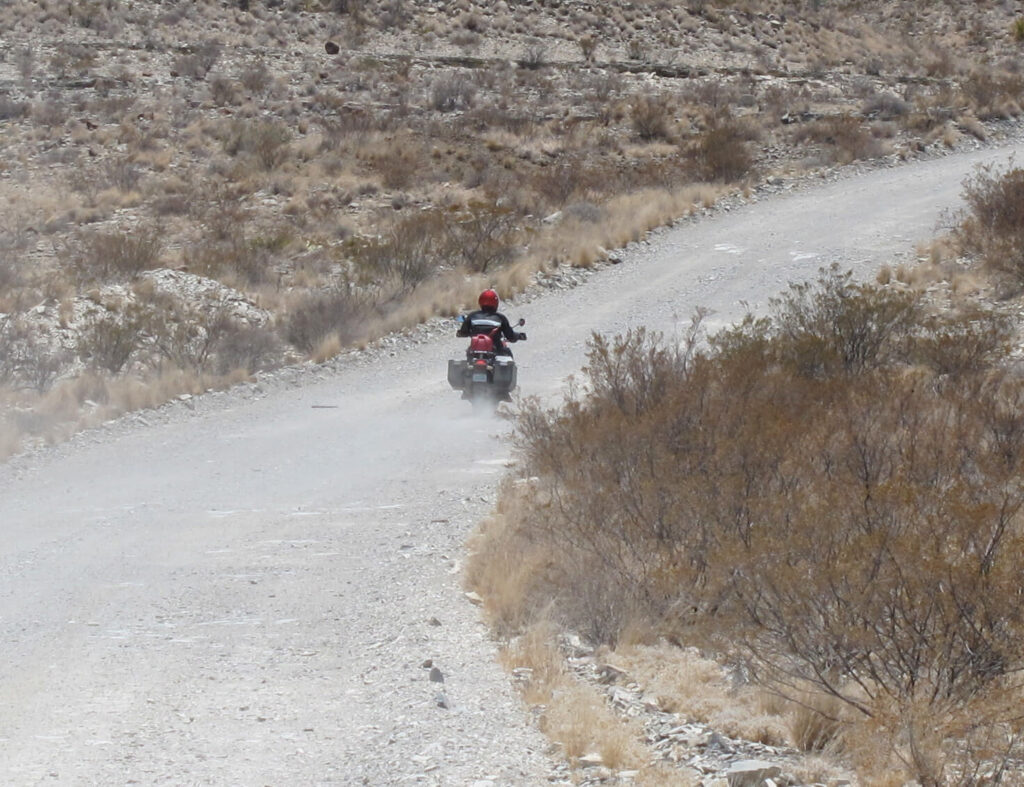
Perhaps we’d be able to summon help, maybe from the satellite phone (though it never seems to work when we need it most), but if not, the other would have to ride for rescue. I had experienced that kind of desperate situation before, in the Sahara, when Brutus’s clutch had failed “way out there,” mired in deep sand, where we had also lost the supposed “road.” As I headed back alone toward Douz, Tunisia, hoping to arrange for a truck to rescue Brutus and his bike, I was sliding in the sand, trying to stay upright and keep moving, and nervously watching the bike’s temperature gauge rise ever higher, toward the red zone. Tense and terrified, I believed that if anything happened to me or my bike then, both of us were going to die.
That story eventually had a happy ending, but in this case, I was not over-exaggerating the situation—not “catastrophizing,” like I know I sometimes do. On the National Park Service website for Big Bend, there’s a section called, “How NOT to die in the desert.” One caution reads, “This environment is not forgiving; hikers have died here after going just a few hours without water.” Then it lists a few daunting cautionary tales from past years, grim accounts of lost or stranded people dying from heat and thirst.
That would be, without question, a hell of a way to die.
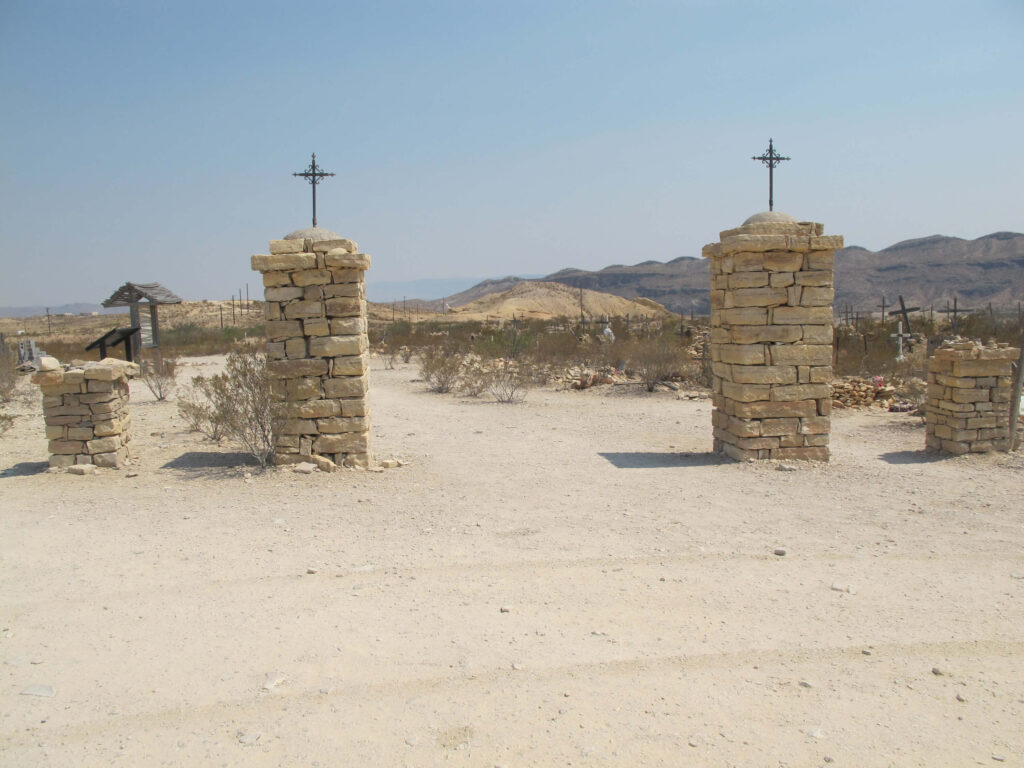
Still, that day in Big Bend may have been the hottest for Michael and me, and thus the most dangerous, but it was only one of a series of days that saw temperatures over 100 degrees. Two days in Arizona, for example, topped out at 110. (My original plan to escape to the cooler mountains had been ruled out by the record forest fires raging along the Arizona-New Mexico line—talk about “extreme heat”).
Bottom line—we broiled in Arizona, too. And Nevada, where Vegas also hit 110 degrees.
Earlier that month, we also encountered high temperatures in the Southeastern U.S., amplified by extreme humidity. Our first ride started at a truck stop in Montgomery, Alabama, then led us through Selma. When I was designing that route the day before, looking over the map for possible “areas of interest,” I remembered newspaper photographs and television stories about Alabama from my youth in the early ’60s. And a number-one song from 1965, “Eve of Destruction,” with these lines:
Think of all the hate there is in Red China
Then take a look around to Selma, Alabama
Ah, so many stories. Just about that song, from the summer before I turned thirteen—written by nineteen-year-old P. F. Sloan, recorded by Barry McGuire as a weary, late-night “guide track” that became the master, and the drummer—Hal Blaine, ubiquitous in those days, on records by everybody from the Beach Boys to the Byrds to Simon and Garfunkel.
I started taking drum lessons that fall, on my thirteenth birthday, and after school I would play along with the radio—often to Hal Blaine’s drumming, though I didn’t know it. Another drummer of my generation expressed his disillusion when he learned, “My six favorite drummers were all Hal Blaine!”
When “Eve of Destruction” made number one on the charts, an “answer song,” “Dawn of Correction,” was hastily released, with an optimistic, pro-American dialectic. One of its composers, John Madara, later dated proto-starlet Joey Heatherton, and accompanied her on a Bob Hope tour to Vietnam. After seeing what American soldiers were going through, he felt “a little uncomfortable about those lyrics.”
Anyway, with those stories and songs in my head, I titled that day’s ride the “Civil Rights Tour”—always glad to include a little history along the way—as we meandered our way through the Deep South on our way to New Orleans.
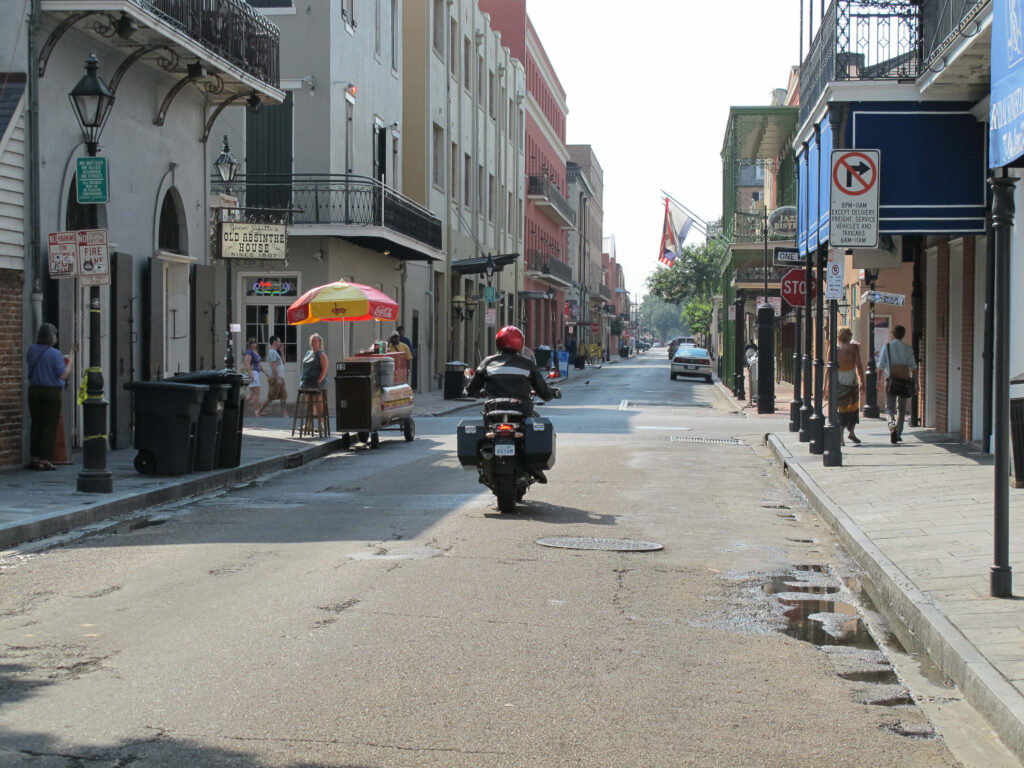
Photo by Michael Mosbach
That shameful time of upheaval and violence proved to be fascinating to reflect upon, and deserves to be remembered. Segregation was apartheid, and the vote was denied to the African-American citizens by both political maneuvering and bullying.
Montgomery is the capital of Alabama, and its part in the story came early, in 1955. In December of that year, an African-American woman named Rosa Parks was arrested for refusing to give up her seat for a white person. (Today there is a section of Interstate 10 in Los Angeles named after Rosa Parks.)
A year later, in December 1956, the Supreme Court declared segregated buses to be unconstitutional. That was the beginning of an historical “correction” of sweeping effect, but even a full decade later, the racist environment was little improved.
On March 7, 1965, a march was planned from Selma to Montgomery—a day that became known to history as “Bloody Sunday.” State and local police attacked the 600 marchers with billy clubs and tear gas. A second march was planned for a few days later, but injunctions were levied, and more violence was threatened, so when Martin Luther King was confronted by a wall of “peace officers” on Edmund Pettis Bridge, outside Selma, he prudently declared that day to be a “ceremonial” march. He turned his people around—a courageous and wise choice, avoiding violence while continuing to fight.
There are many dramatic levels in that story—the white supporters from the North who were brutalized or killed, the Jewish rabbis in the “front line” of those marches, and the strict adherence the protestors paid to legal strictures, which allowed them ultimately to triumph.
The simple result was that on March 21, a five-day march finally reached the Capitol building in Montgomery—though protected by 2,000 soldiers, 1,900 members of the Alabama National Guard (under Federal authority), and uncounted FBI agents and federal marshals.
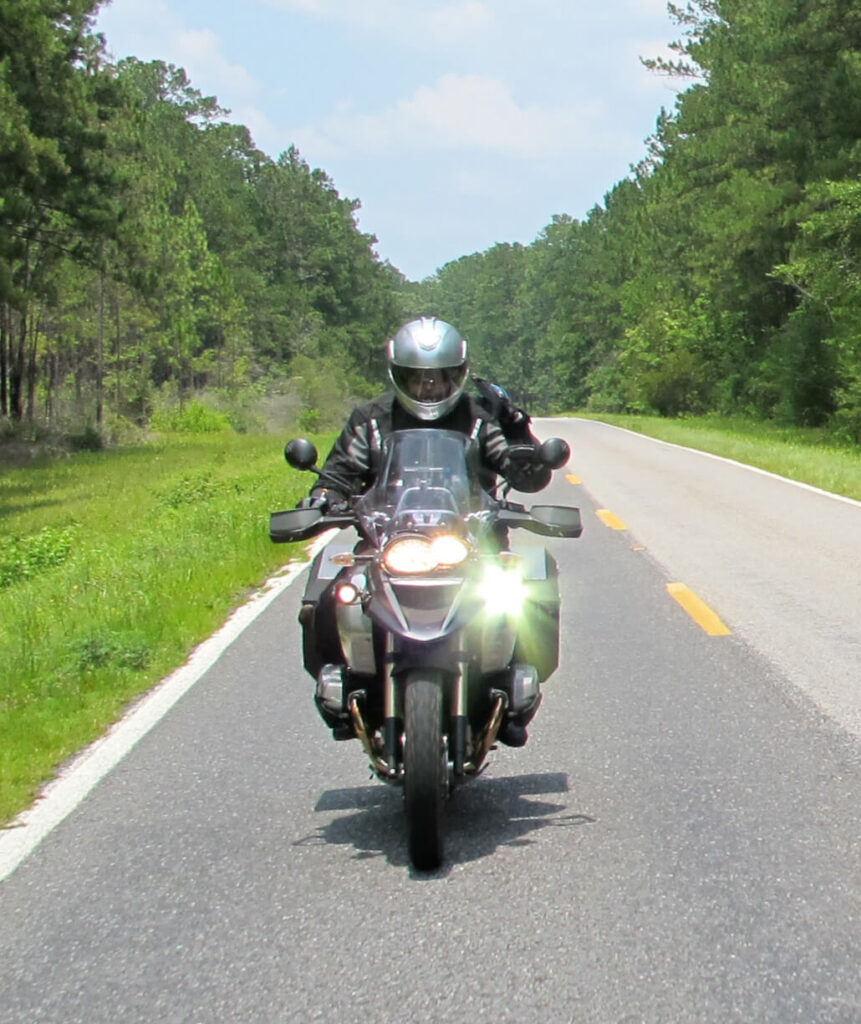
So as Michael and I rode between Montgomery and Selma, I was considering all of that, and my mental radio couldn’t help but play Lynyrd Skynyrd’s “Sweet Home Alabama,” a title that now emblazon the state’s license plates.
As one who regularly travels in all of the American states, filtering through traffic and looking at the different plates for many miles, I tend to notice their slogans. I used to like Pennsylvania’s, for example: “You’ve Got a Friend in Pennsylvania.” Then they changed it to a dreary web address. Same with Indiana, who used to have “Amber Waves of Grain” and “The Crossroads of America,” but now offer a dot.com. Bah.
Alabama’s license-plate slogan was once “Stars Fell on Alabama,” the title of a romantic standard from 1934 by Frank Perkins and Mitchell Parish. Parish’s lyrics are said to refer to a meteor shower in 1833, “when the stars fell,” but of course they are a metaphor for . . . love. Or something like it.
We lived our little drama
We kissed in a field of white
And stars fell on Alabama
Last night
Much is implied by that “stellar metaphor,” it seems to me, but it is a nice anthem for the state. No bragging about its skies being uniquely blue, as in “Sweet Home Alabama,” and without any defensive bluster—like Skynyrd’s attack on fellow Canadian Neil Young, who had dared to criticize the state’s racial backwardness in a couple of his songs. This “Sweet Home Alabama” verse speaks for itself:
Well I heard Mister Young sing about her
Well, I heard ol’ Neil put her down
Well, I hope Neil Young will remember
A Southern man don’t need him around anyhow
My taste in Classic Southern Rock might favor the more eclectic and nuanced Allman Brothers Band, but I don’t presume to criticize a venerable institution like Lynyrd Skynyrd—especially because my good friend Michael Cartellone has been their drummer for many years (funny that his previous band was called Damn Yankees.) But none of the three guys who wrote “Sweet Home Alabama” were even from there, and their producer, Al Kooper (born Alan Kuperschmidt in Brooklyn), couldn’t have been too sympathetic to the song’s redneck ethos. (Though Kooper’s voice appears in the background of the above verse, mimicking Neil Young’s “Southern Man.”)
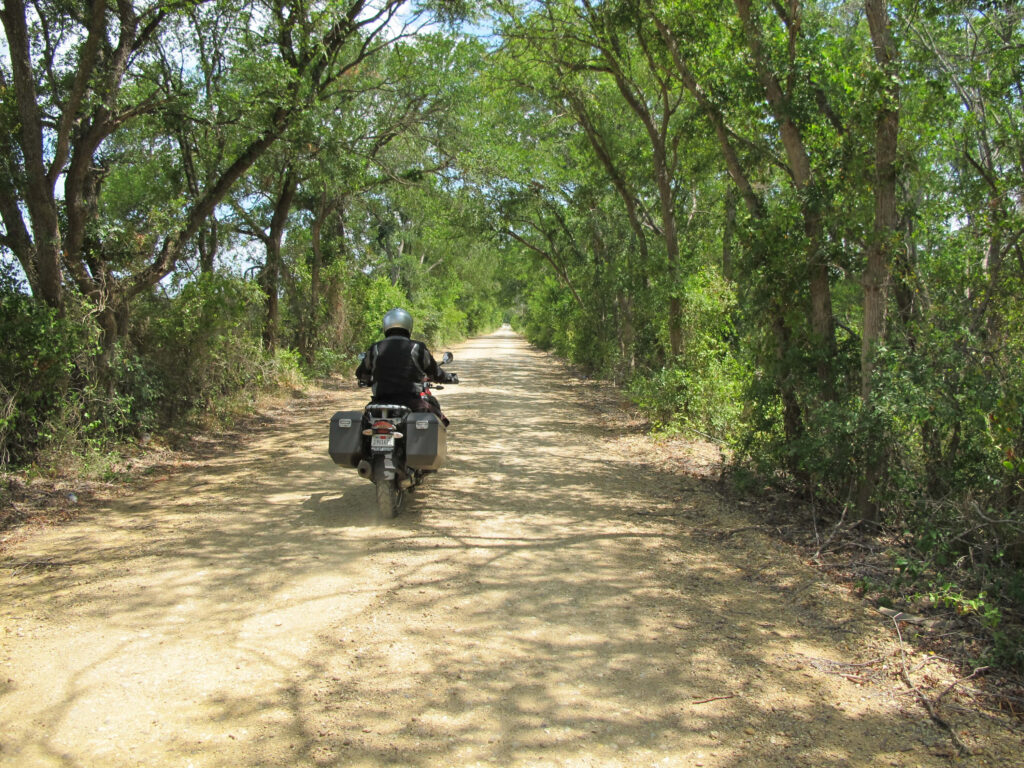
But when it came to songs of racial protest, Neil Young’s “Alabama” and “Southern Man” could never approach the bitter fury of Nina Simone’s “Mississippi Goddam.”
Alabama’s gotten me so upset
Tennessee made me lose my rest
And everybody knows about Mississippi Goddam
Nina Simone also recorded a song made famous by Billie Holiday, “Strange Fruit.” In more recent times, a 1993 live recording by Jeff Buckley (whose early demise was another tragedy) is also unforgettable.
Southern trees bear strange fruit,
Blood on the leaves and blood at the root,
Black body swinging in the Southern breeze,
Strange fruit hanging from the poplar trees.
Another terrible fact that should be remembered forever is that in the early twentieth century, just 100 years ago, an annual average of 100 black men—one every three days—were being tortured and executed by mobs of white Americans. That is a reminder of how far we have come, which echoes the anthem sung by Martin Luther King and his followers, “We Shall Overcome.” But it also illustrates how far we had to go—and, perhaps, what a journey is ahead of us yet, before there is justice for all.
Like the stories of William Faulkner or Flannery O’Connor, songs like “Sweet Home Alabama” and “Strange Fruit” are the “text” of the South, old and new. The great American songwriter Johnny Mercer was a Southerner, too, and one verse in his lyrics for “Blues in the Night” defines a certain geography of that region—that “distinct society,” in the words coined for Canadians to refer to Quebec.
From Natchez to Mobile
Memphis to St. Joe
Wherever the four winds blow
Interestingly, St. Joe—St. Joseph, Missouri—might have stood for the route out of the South, being the westernmost point reachable by rail until after the Civil War, and thus a metaphor, a synecdoche, for “the West.” The other three cities, Natchez, Mobile, and Memphis, basically triangulate the Mississippi Delta. Cotton and sugarcane country. Slave country.

As Michael and I rode across the sweltering farmlands of Alabama, Mississippi, and Louisiana, with all of those associations with civil rights and the racial strife in the “Old South” alive in my mind, I decided that the worst life imaginable must have been that of an African slave in the Mississippi Delta. To imagine the fear and misery of being wrenched from their homes and put into chains, surviving an unimaginably inhumane ocean journey, to end up laboring in the fields all day, every day, in that kind of heat, with no choice, no reward, no freedom, and no hope—it’s hard to imagine anything worse. In the past, when I had contemplated the “worst life” scenario, it had seemed to me that being a coal miner must be about the worst life I could imagine.
But slavery . . .
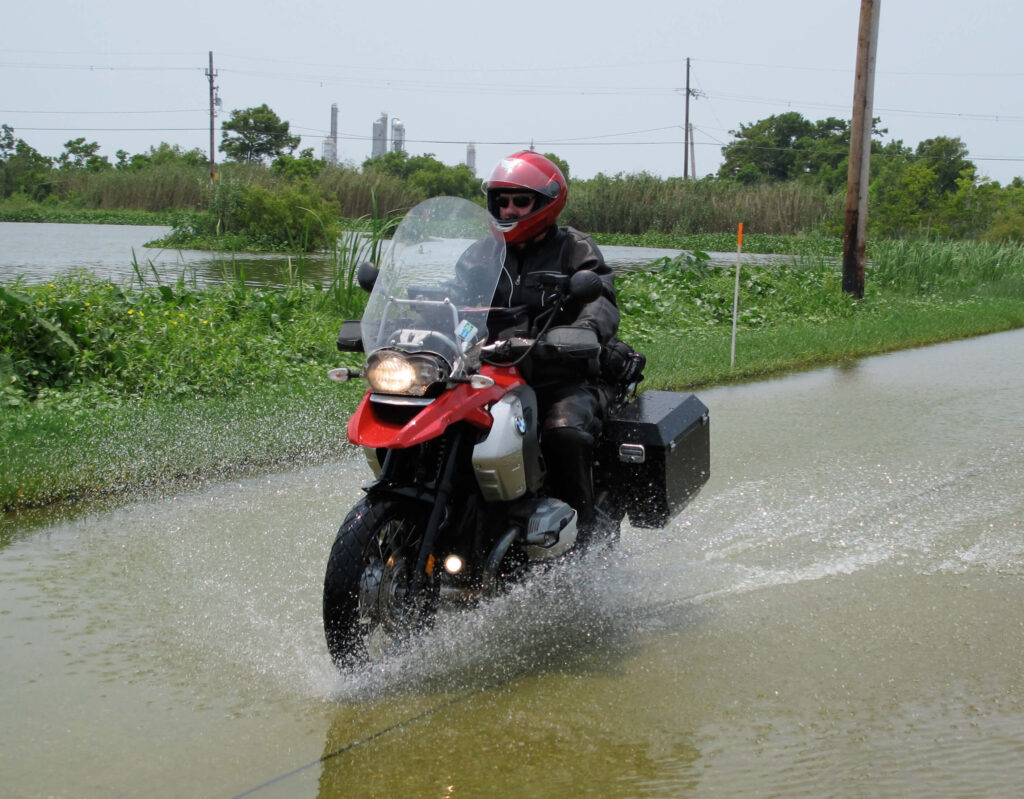
In cooking, “poached” means cooked in water—and here is a fine example. This image would seem to be about as far as possible from the arid Big Bend photos shown previously, but it was only a few days before, and not that far—southern Louisiana. It was 98 degrees, and with the obvious “humidity”—above, below, and all around me—the sticky swampland air felt like a hot sponge, even more uncomfortable than the baking desert. Riding in from what I called the Civil Rights Tour, Michael and I spent a full day in and around New Orleans, which is rare for us. We usually avoid the big cities except for show days, but New Orleans is worth it, for its uniqueness and charm—and the opportunity to stay in a good hotel, and eat at a fine restaurant.
Also, because we were already in town for the next night’s show, I could plan a show-day ride that didn’t actually have to go anywhere. Perfect!
The official band itinerary showed the distance from the hotel to the arena as “.9 blocks,” but Michael and I managed to ride more than 200 miles between those two points. That might stand as a record for a shunpiker—those who avoid all “direct routes” to anywhere.
Scanning the map the day before, I saw a gray line that ran straight south from New Orleans and ended at a dot called Lafitte, and a memory-bell sounded (“that rings a bell”). Some years ago, in the Smithsonian magazine, I read a fascinating story about the pirate Jean Lafitte. Around the turn of the nineteenth century, Lafitte and his older brother Pierre had a fleet of ships working out of a stronghold called Barataria in the Louisiana bayous. From there they sold smuggled and plundered goods to the merchants of New Orleans—Jean the pirate, Pierre the dealer. During the War of 1812, Jean Lafitte and his Baratarians played a key role for the American side in the Battle of New Orleans against the British, and were pardoned by the American government for their previous crimes.
A dot at the end of a lonely little road, along with a little history like that, was lure enough for this shunpiker. The ride down to Lafitte carried us through typical Louisiana swampland, past trees draped in Spanish moss, across a high bridge over the Intracoastal Waterway, and to the remote shrimp-boat harbor of Lafitte. From there we doubled back a short way and headed farther south—as far down the Mississippi as the road would carry us.
Farther, actually, because long stretches toward the bottom of that road were underwater, as shown above, and below. Anywhere else in the country, such roadways would have been classed as “flooded,” and closed—but here, it just seemed to be accepted as normal.
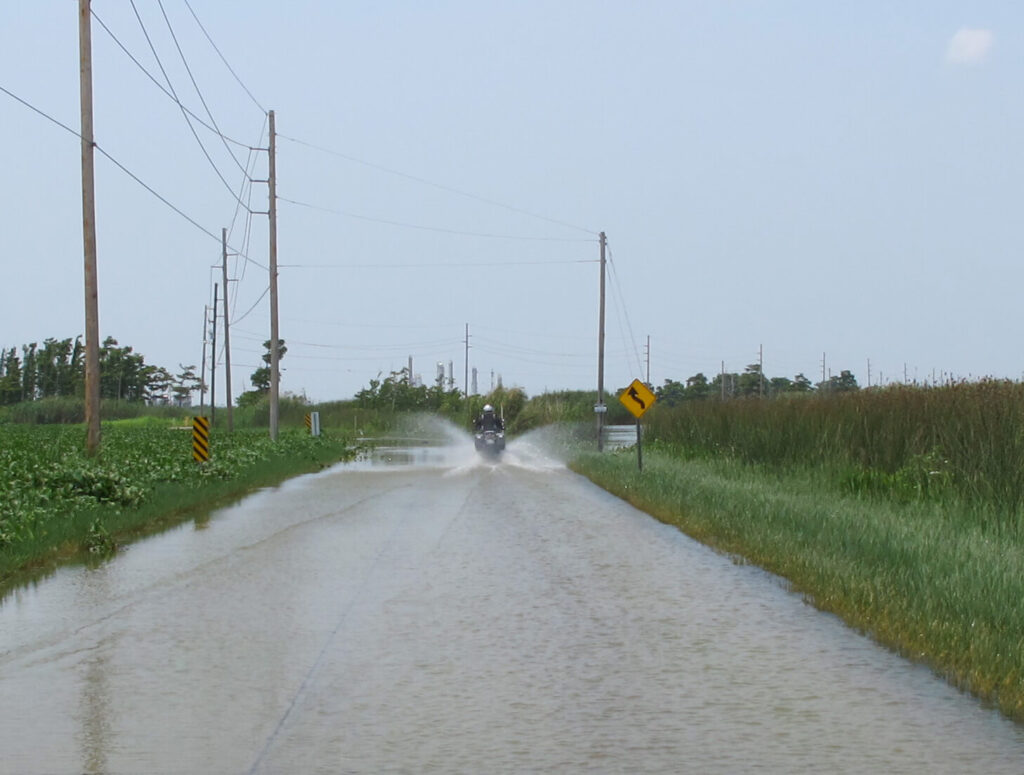
Cars and trucks passed, pushing up bow waves and leaving wakes—just as we did—to and from the harbors for shrimp boats (inspiring quotations from Forrest Gump from Michael) and oil-rig outfitters. We saw many scary-looking industrial plants, like the one in the background of the earlier photo of me splashing along the road. Chemical and petroleum refineries seem to line the banks of the Mississippi all the way down from at least Missouri.
We also saw many relics from Hurricane Katrina, even more than five years later: prefab buildings erected beside the bare foundations of where a home had stood, and even a few standing ruins of larger buildings, their second-floor windows smashed and filled with debris. Another American tragedy.
When I stopped to take the above photo of Michael’s impressive fountain of spray, I put my boots down through the water to the road, and straddled my motorcycle. As I toed the shifter into neutral and grabbed the camera from my tankbag, I happened to look down, and was amazed to see a dinner-plate-sized crab scuttling by. I just stopped and stared, in surprise and delight, while the crab paused beside me, as if to hold his ground, and gave me a baleful look. I learned later that he was a male blue crab, called a “Jimmy” (young females are “Sallys,” and older females “Sooks”)—but at that moment, the germane fact was that the “territory” Jimmy was so ready to defend was the surface of the road.
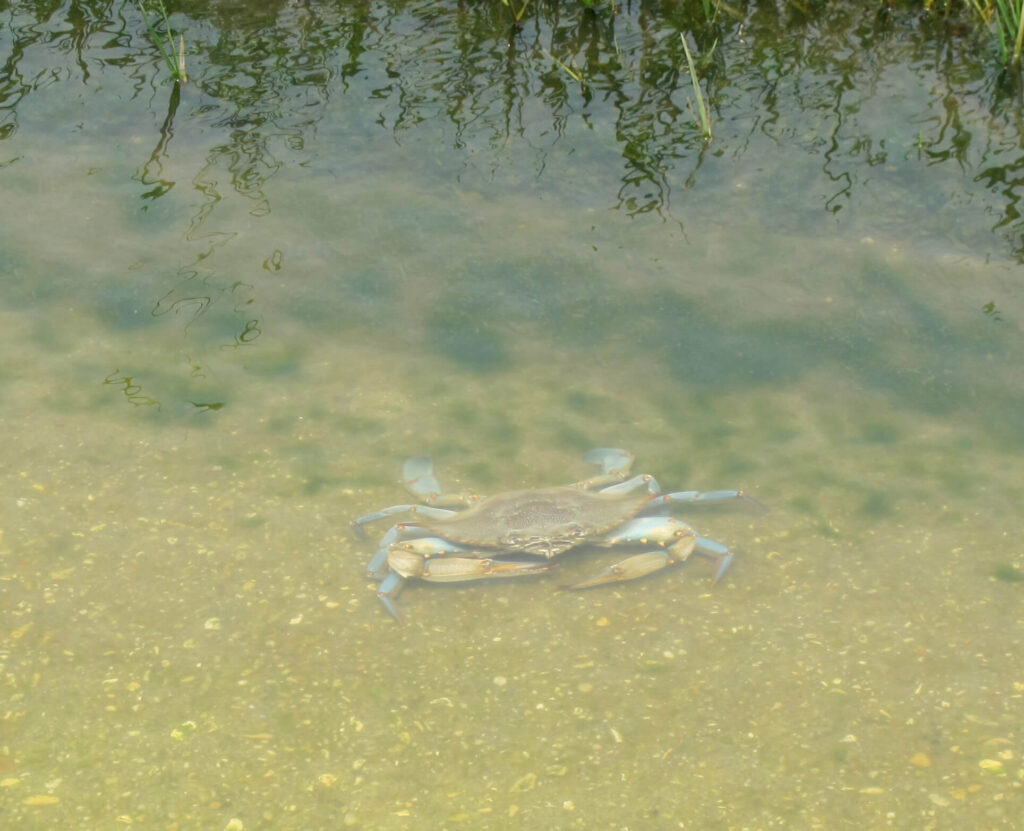
The dark green algae around him is convincing evidence that those stretches of road are flooded frequently, maybe always, and that algae was also very slippery under our wheels. In deeper stretches, the “bow wave” was strong enough to sweep my feet right off the pegs, while it splashed high over my windscreen and helmet.
That was . . . interesting . . . but we were glad to get back to drier roads, heading north again to catch a ferry across the Mississippi, then returning to the city on the other bank, catching a second ferry back into New Orleans.
There we had the hottest moment we, or our motorcycles, had ever experienced. Traffic on the bridge over the Mississippi into the city was at a near standstill, and as we straddled the bikes in that 98-degree sponge, surrounded by waves of engine heat, exhaust fumes, and tortured metal, both of our instrument panels started flashing a red warning light, for “overheating.” We knew just how they felt . . .
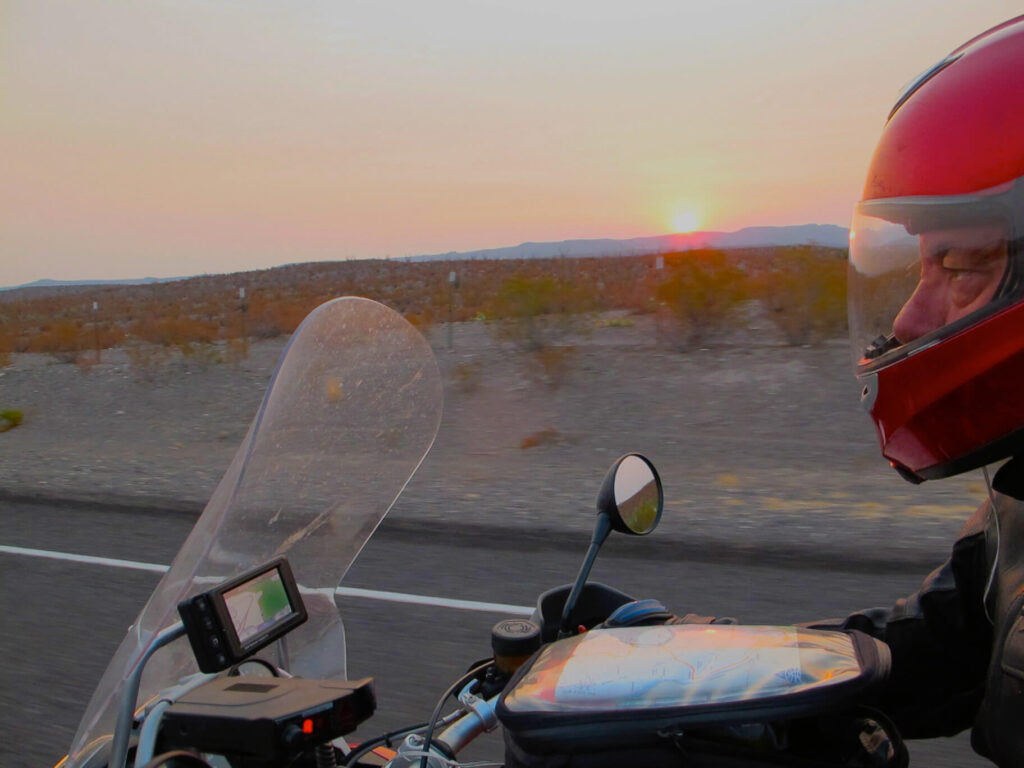
After a few days of that kind of swelter, Michael and I began riding out earlier, to put in some miles when it was cooler. Though that was relative—the above photo was taken a few days later, riding out of Lajitas, Texas (another echo of Traveling Music, in 2003), near Big Bend. It was around 6:00 a.m., and the temperature was already in the 80s.
(My original route for that morning had included another long stretch of gravel, but after the previous day’s sufferings, Michael said, “You’re not doing that again.” I snorted huffily and pretended to resist, then agreed, “Hmpf—I’m not doing that again.”)
After a glorious, roller-coaster ride along the river in the predawn twilight, and breakfast in Marfa (I was sad to see that the place where I stopped in 2003, Mike’s Place, was gone), by the time we reached El Paso just after noon, it was 107 scorching degrees.
The haze along the horizon and around the rising sun in this photo tells another story—about the forest fires devouring huge areas of Arizona. As we loaded the bikes that mid-June morning, my nostrils picked up the unmistakable smell of burning forest—from almost 500 miles northwest of us. Normally Big Bend country, like Death Valley or Grand Canyon, has air so supernaturally clear that you can see the folds in mountains and canyons from many miles away, but all over the Southwest we would notice that smoke fuzzing the skies.
After El Paso, when Michael and I were headed up toward a show in Phoenix, I had hoped to route us into the mountains of Eastern Arizona, up that amazing Highway 191, and maybe stay the night in Show Low—but now that area was smack in the middle of a record-breaking forest fire.
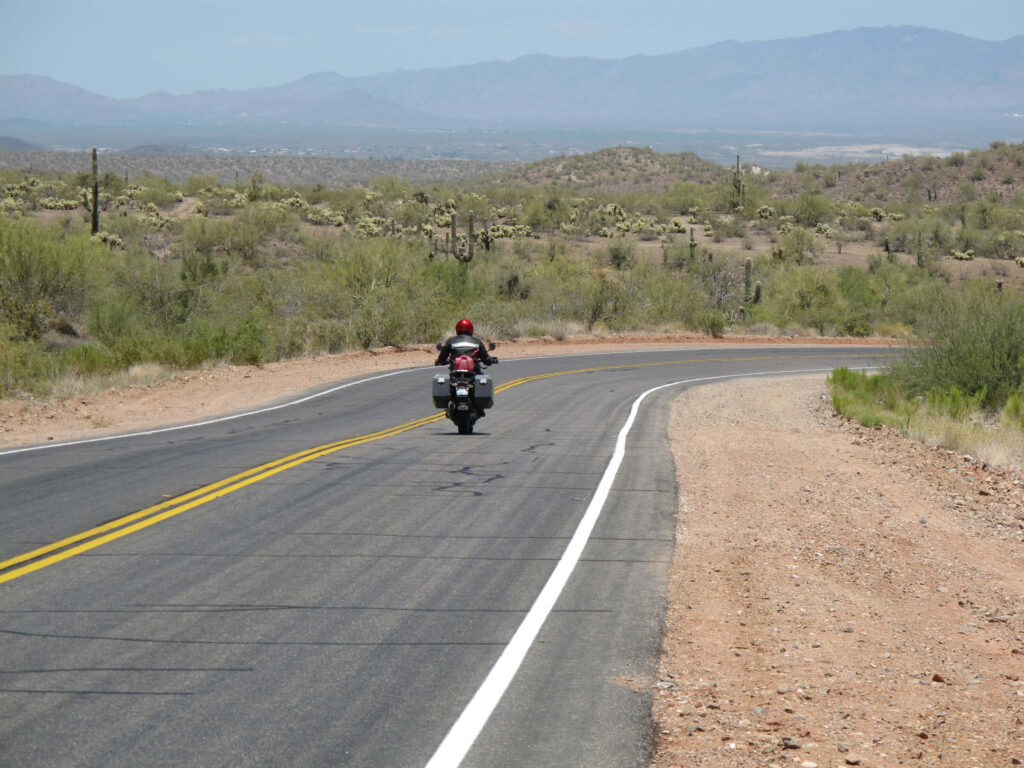
So instead we rode southwest from a truck stop in Casa Grande, Arizona, through the hot cactus desert (110 degrees) of the Tohono O’odham reservation. We were near the Mexican border again, and on the lonely backroads we traveled, we encountered a staggering number of Border Patrol vehicles, blazing by in their green and white paint. There was also an equally staggering number of roadside shrines—crosses of wood or metal, with colored glass candle holders and plastic flowers—like I had often seen in Mexico. At first I thought they were for victims of auto accidents, as usual, but I soon saw that there were just too many of those shrines, along straight stretches of road, and sometimes they seemed to commemorate entire families.
They were, I realized, memorials for people who had died trying to cross the desert to a new life in the United States. Sometimes groups of them were betrayed and stranded by their supposed guides, the “coyotes,” to die in horrible ways. Sure, they were illegal aliens, or would-be undocumented workers, as you prefer, but—what to do? The great Western writer Edward Abbey’s suggestion was to catch them, give them guns and ammunition, and send them back to fix the things that made them leave.
But Edward Abbey was a conservative pragmatist, and I am a bleeding-heart libertarian—who also happens to be fond of Latin-Americans (if that isn’t “reverse racism”). The “libertarian” in me thinks people should be able to go where they want to go, and the “bleeding heart” doesn’t want them to suffer needlessly. In any case, such wrenching stories are surely part of another ongoing American tragedy. At one of our roadside stops, Michael mentioned that a large part of the Border Patrol’s duties was actually saving people like that, and I knew that was true.
But I still didn’t like their quasi-military presence everywhere, and I sure didn’t like their omnipotence—stopping our bus and searching it whenever they felt like it, for example. Under the Department of Homeland Security, they had too much power. I always think of a scene in Derek Lundy’s Borderlands, when he described riding his motorcycle in Texas, in Big Bend country, near the Mexican border. He was stopped by the green-and-whites, and his motorcycle’s luggage was thoroughly searched—with no “probable cause” whatsoever. When they let him go, he reported, “I got my constitutionally-violated ass out of there.”
Michael and I followed an enjoyable, deserted two-lane blacktop north through the Vulture Mountains (great name for that deadly environment). Circling east, we climbed higher, into the Bradshaw Mountains, to Prescott (5,400 feet) for the night. As we followed the winding road upward in long sweeping bends, I watched the digital thermometer on my motorcycle fall, one or two degrees at a time, all the way down to a relatively cool 96 degrees.
And you know—it did feel much better!
